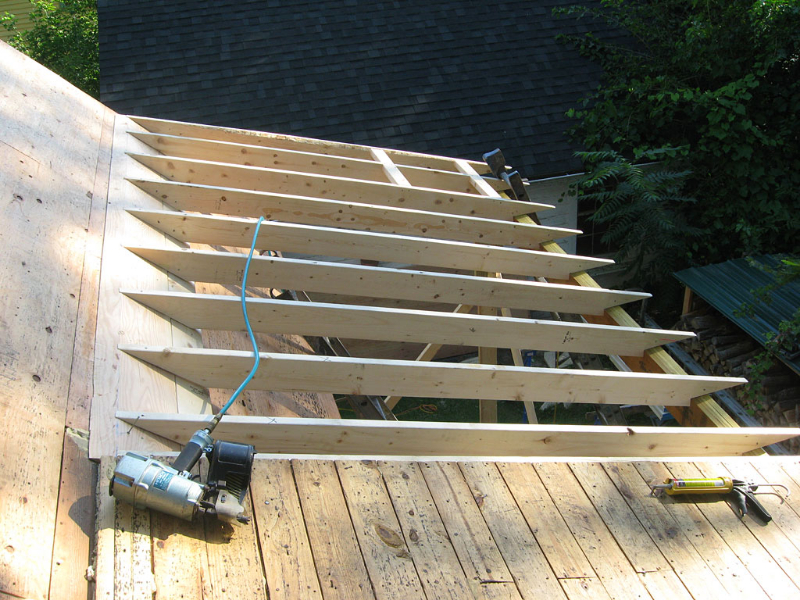


Anything up to a 10° is considered a flat roof. Where can you grow a green roof?įor most DIYers, a flat roof is the easiest option for a green living roof. With an intensive roof you get a more impressive and landscaped look to your rooftop garden that can attract wildlife as well as benefitting from warmer spaces in winter and cooler spaces in summer.įor more information on green roof maintenance read our guide. You will need to pay more attention to structural loading, irrigation, and long term ongoing maintenance. However, if variety is what you’re after and you want your green roof to support larger, more diverse plants and bushes then you should opt for the intensive option. You can still enjoy the benefits of better sound protection, improved thermal performance and a cooling effect in hotter months. These can easily be installed on sheds and garages. If you are looking for a low maintenance, lightweight green roof that features simple and self-maintaining vegetation then the extensive green roof is for you. It should be clear from the above which green roof type is best for you. With more depth of growing substrate (100 – 200 mm) it can support a greater diversity of plants but not shrubs and trees. They need much more attention and maintenance – much like a normal landscaped garden.Ī semi-extensive green roof system sits somewhere in between the two main options, and is based on the extensive roof principles. Intensive roofs require a much deeper substrate to be built up - this means additional weight that will need to be supported as well as irrigation requirements. They are more common in larger commercial projects including parks and gardens where recreational use is expected. They require a layer of growing medium / soil to support this much thicker vegetation layer. You may find that they are referred to as roof gardens. Intensive green roofs are designed to support much larger items like bushes and small trees as well as a wider variety of plants. If you are using sedum blankets then you will require some additional growing medium but it can be fairly shallow. Sedum green roofs are the most common type due to the hardiness and low maintenance requirements of the plant. Extensive green roofs normally have an attractive low layer of vegetation, around 80 - 100mm high such as grass, moss, sedum or small flowers. They are suitable for both existing and new build roof decks. Let’s look at the differences between them: Extensive green roofsĮxtensive green roofs are a popular option for homeowners as they are lightweight and require very little maintenance with no need for additional watering unless there is a prolonged drought. When it comes to your options, there are two main types of green roof to consider – extensive and intensive. Green roofs are sometimes referred to as living roofs, grass roofs or sedum roofs, but these all relate to the same thing.
#BUILD ROOFS HOW TO#
In this guide we take you through the main considerations around choosing a green roof system, how to design it to meet your needs and then we cover green roof construction. They also have a positive environmental impact, attracting wildlife such as birds and insects, and improving air quality in particular in urban areas. Green roofs extend the life and improve the performance of the roof, cutting energy costs. They also deliver a whole range of benefits. 14 July 2020.A green roof is a great way to create an attractive design feature on an outbuilding like a shed or garage or transform your home. Roofing Contractor & Maintenance Professional. They aren't seen on sheds as frequently as other styles, but are still a popular choice. Saltbox roofs look like skillion roofs, but with an extra short slope opposite the long angled plane, like an upside-down check mark.A skillion roof is made up of a single flat plane which slopes gradually from top to bottom. Skillion roofs are one of the simplest roof styles used in shed-building.Each side of a gambrel roof has two sloped faces, the lower of which is either perpendicular or at a slight angle to the ground. Gambrel roofs are the style traditionally used for barns.Gable roofs feature a single central peak, with two symmetrical sloped sides.
#BUILD ROOFS PROFESSIONAL#
Roofing Contractor & Maintenance Professional Expert Interview. Each of these roof types is sloped to provide runoff for precipitation, which means the design you go with will largely be a matter of aesthetic preference. The most common styles include gable, gambrel, skillion, and saltbox roofs. There are many different roof styles used for building sheds.


 0 kommentar(er)
0 kommentar(er)
